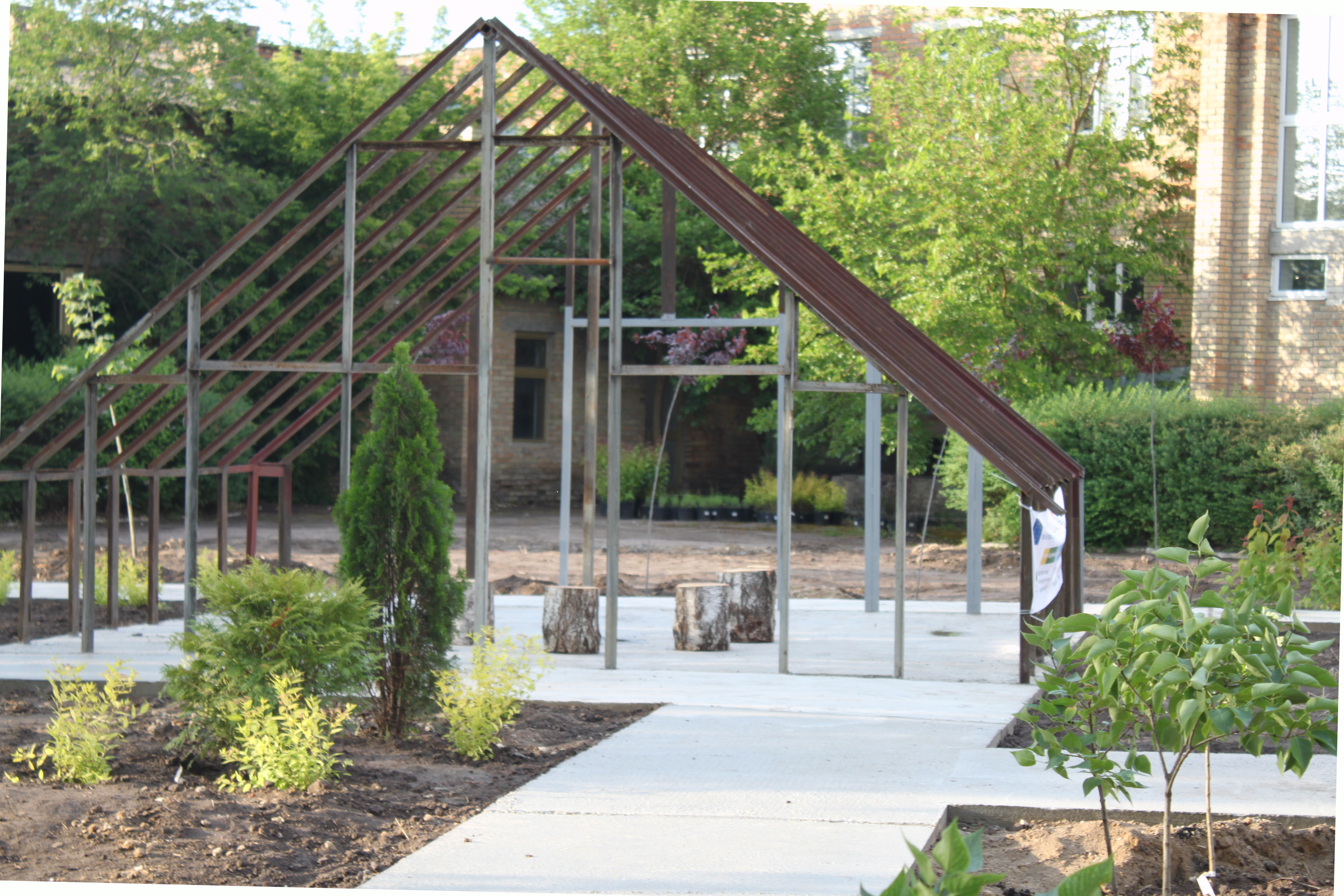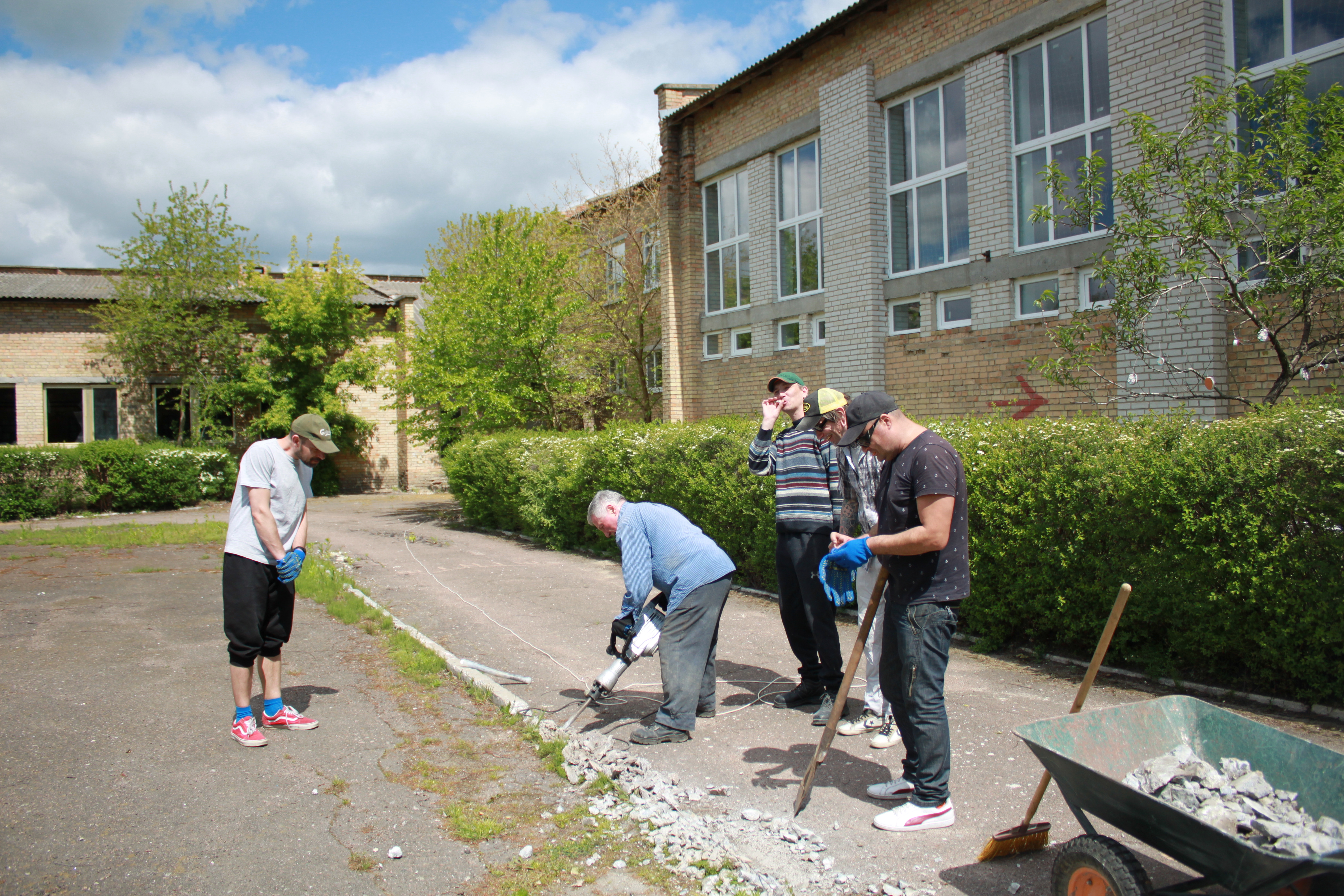ZMINA: Rebuilding - From Destruction to New Life. A Park of Hope for a War-Affected Community

In the heart of war-torn Ukraine, where devastation once lingered, a schoolyard has transformed into a sanctuary of healing and resilience. The project From Destruction to New Life is more than a mere reconstruction — it symbolizes hope, recovery, and community spirit. Technical Project Manager Dmytro Chulkov shares the inspiring journey behind the creation of this landscape-architectural park, designed to help children and the local community heal from the trauma of war.

The Importance of Emotional Rehabilitation
"The emotional rehabilitation of children who have experienced occupation is crucial," Chulkov explains. "These kids have witnessed horrors that no child should ever see. Restoring a sense of safety and normalcy is a vital step in helping them overcome psychological trauma."
The park aims to provide a space where children can reclaim their childhood. "During the occupation, children lose their sense of stability and trust. This park offers a renewed sense of security," he says. Beyond personal recovery, the project serves as a community-driven act of resilience. "It's about shaping a positive future. Without proper support, these kids risk growing up with a profound sense of hopelessness."
The project began with listening. "We engaged directly with the students, giving them a voice in shaping their environment. They even participated in a drawing contest, illustrating their visions for the park," Chulkov recalls. Mental health professionals provided guidance on designing spaces that would promote emotional recovery, while landscape architects and accessibility specialists ensure inclusivity.
"Sustainability was key from the start," Chulkov notes. "We used eco-friendly materials, integrated green spaces, and prioritized accessibility to make sure everyone could enjoy the park."

A Concept Born from Experience and Expertise
Chulkov's inspiration stemmed from his work with the "Restoring Schools for Resilience" program in 2023. "I visited over 40 schools across Ukraine and noticed a stark difference between schools with and without green spaces. The lifeless, asphalt-covered yards felt oppressive, whereas green spaces fostered vitality and well-being."
When Chulkov saw the damaged schoolyard in Makovyshche, he envisioned turning destruction into growth. "The idea naturally emerged to create a space where children could regain their emotional balance and reconnect with nature."
The park is more than a recreational space. "We incorporated aromatherapy principles, planting lilac, lavender, and aromatic juniper to create a calming environment. Each bloom serves as a reminder that healing takes time but is always possible," says Chulkov.
One standout feature is the gazebo, which serves as an outdoor classroom. "It was repurposed from a war-damaged greenhouse. Transforming something once associated with destruction into a space for learning symbolizes resilience and renewal."
The park's design integrates elements that promote emotional healing. "The aromatherapy garden has been particularly impactful, with its calming scents helping reduce anxiety. The open-air classroom offers students a peaceful learning environment, while the meadow provides space for social bonding. We even planned a trampoline area for stress relief, though its installation is pending due to budget constraints."
Mental health professionals played a pivotal role in shaping the park. "Their recommendations guided the inclusion of social spaces and physical activity areas, ensuring the park addressed not just the physical but emotional needs of the children," Chulkov explains.
.jpg)
Community at the Heart of the Project
Community involvement was crucial. "From the very start, students, teachers, parents, and local residents contributed their ideas and labor. Volunteer days brought people together, clearing debris and planting trees. This wasn't just about building a park; it was about rebuilding a community."
Local businesses, such as the Eco-Krayina plant nursery, offered their expertise, ensuring the park's long-term sustainability. "The collaboration created a sense of ownership and pride, ensuring the park would be well cared for in the years to come," says Chulkov.
The road to completion wasn't without its hurdles. "Two project participants withdrew due to fears of military conscription, and we had to quickly reorganize. Additionally, the village was mourning fallen soldiers at the time of the park's completion, so we opted for a subdued opening ceremony to respect the community's grief."
Chulkov also highlights logistical difficulties. "Acquiring materials during wartime posed a significant challenge. Supply chains were disrupted, prices fluctuated, and transportation required careful coordination. Each step of the process demanded patience and creative problem-solving."
The park has become a cherished part of daily life. "Students spend their breaks outside, teachers hold classes in the gazebo, and the community gathers for events. Children appear happier, more energetic, and their sense of belonging has grown," Chulkov reflects. "The park has become a sanctuary for emotional healing."
Parents have noticed the change in their children as well. "My daughter used to be very withdrawn after the occupation," one parent shared after the project. "Now she comes home excited, talking about the flowers she planted and the games she plays with her friends. The park has given her a place to be a child again."
The project's success inspired the formation of "Synya Koma," a public organization dedicated to similar initiatives across Ukraine. "What started as a schoolyard transformation has grown into a movement," Chulkov says proudly. "This park stands as a testament to resilience, a symbol of hope, and proof that even in the darkest times, new life can bloom."
As Ukraine continues to rebuild, the park in Makovyshche serves as a beacon of what can be achieved when a community comes together. "It's more than just a park," Chulkov concludes. "It's a promise to our children that they are not alone, and that hope and healing are always possible."

Looking to the Future
Plans are already underway for expanding the initiative. "We want to replicate this model in other war-affected areas, tailoring each park to the needs of its community. Each green space will serve as a reminder that even after devastation, life — and hope — can take root once more."
The story of this park is a story of resilience. It serves as a living reminder that healing is not just about rebuilding structures but about nurturing hearts, minds, and communities.
Author: Ján Janočko
ZMINA: Rebuilding is a project co-funded by the EU Creative Europe Programme under a dedicated call for proposals to support Ukrainian displaced people and the Ukrainian Cultural and Creative Sectors. The project is a cooperation between IZOLYATSIA (UA), Trans Europe Halles (SE) and Malý Berlín (SK).